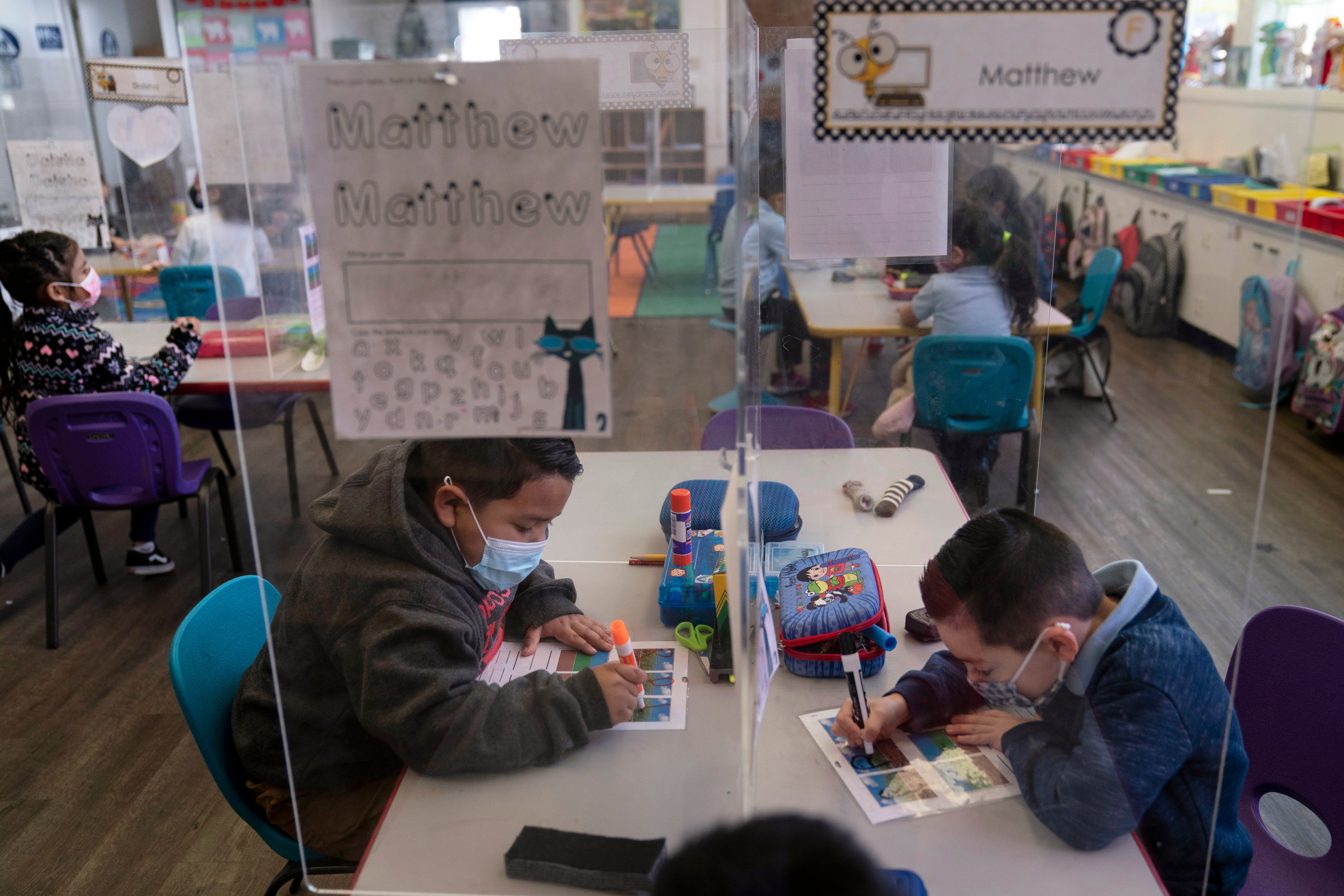LOCALIZE IT: Exclusive data on district-level test scores

Your support helps us to tell the story
From reproductive rights to climate change to Big Tech, The Independent is on the ground when the story is developing. Whether it's investigating the financials of Elon Musk's pro-Trump PAC or producing our latest documentary, 'The A Word', which shines a light on the American women fighting for reproductive rights, we know how important it is to parse out the facts from the messaging.
At such a critical moment in US history, we need reporters on the ground. Your donation allows us to keep sending journalists to speak to both sides of the story.
The Independent is trusted by Americans across the entire political spectrum. And unlike many other quality news outlets, we choose not to lock Americans out of our reporting and analysis with paywalls. We believe quality journalism should be available to everyone, paid for by those who can afford it.
Your support makes all the difference.EDITORS/NEWS DIRECTORS:
Results of a test known as “the nation's report card” released earlier this week showed historic declines in U.S. student performance since the start of the COVID-19 pandemic.
But what does that mean for your individual school system?
The AP received exclusive access to data from researchers at Harvard and Stanford that show the extent of learning loss across the country. This is the largest and most detailed dataset yet available on students' learning levels since the pandemic's school shutdowns. Read AP’s coverage here.
The data allow for exploration of performance in thousands of school districts. You can make apples-to-apples comparisons across school systems, within states and across state borders. The data also include factors such as area income levels and the amount of time students spent in remote learning.
Below are links to the data and AP's analysis, and guidance on how to use it all.
WHAT'S NEW HERE?
The National Assessment of Educational Progress findings that came out earlier this week offered a broad overview of national and state trends, with an up-close look at 26 large urban school systems. The analysis out today includes detailed data on thousands of school districts in 29 states and Washington, D.C. — places where local standardized test scores were available.
The education researchers behind this analysis, sociologist Sean Reardon of Stanford and economist Thomas Kane of Harvard, created a map showing how many years of learning the average student in each district has lost since 2019.
Their work converts state test scores from 2019 and 2022 into a common metric known as a grade-level equivalent. To estimate how learning levels had changed since the pandemic hit, the researchers compared how scores in each district measured against national averages in 2019 and then again in 2022.
If a district in 2019 was one grade level below the 2019 U.S. average in reading, and then in 2022 it was two grade levels below the 2022 U.S. average in reading, it is considered to have lost the equivalent of one year of reading.
The research, called the Education Recovery Scorecard, is viewable here: https://educationrecoveryscorecard.org/
SOME TAKEAWAYS FROM THE DATA
The average student in grades 3-8 lost the equivalent of more than half a year of learning in math and nearly a quarter of a year in reading, according to the researchers. They note a wide range of variation across districts and states in how severely academic growth was affected.
The data also demonstrate how the pandemic has exacerbated inequality, as school systems serving low-income students saw the biggest drops in learning levels.
You can access full district-by-district data and full state-by-state data in spreadsheets prepared by AP. This data dictionary explains the column headings for the data, and in a notes tab, it explains how to check your district's change in performance against the margin of error. PLEASE READ THIS MARGIN OF ERROR NOTE BEFORE REPORTING YOUR DISTRICT'S DATA.
An analysis of the data with insights from AP data journalist Sharon Lurye is available here. It includes state and district rankings.
REPORTING QUESTIONS
With the effects of the pandemic now more apparent than ever, how much have individual school systems budgeted for interventions? Is it enough?
Some researchers suggest the federal relief money allocated for recovery is inadequate to address the level of need. One way Kane recommends estimating the cost of recovery is to take the average loss in a district – for example, a year’s worth of learning in math – and budget what a district typically spends for a year's worth of school. Then, compare that with the federal aid each district has received.
What about the kinds of interventions schools are planning? Kane suggests asking school districts to tell you what they're doing to address learning loss in reading and math, and why they think it will work. Press schools: If they're offering tutoring, how many kids are receiving tutoring? How many hours a week? Ask the school: Is that enough to cover the district's learning losses — and if so, what's the evidence or efficacy data the school is using? And if not, what else does the district need money or staff to do to make kids whole?
Within your state or region, you also may be able to compare performance in different school districts. Why did some schools decline more, or outperform others? Are schools that serve low-income communities doing enough to make kids whole?
___
Localize It is an occasional feature produced by The Associated Press for its customers’ use. Questions can be directed to Katie Oyan at koyan@ap.org.